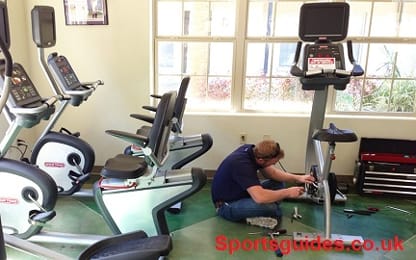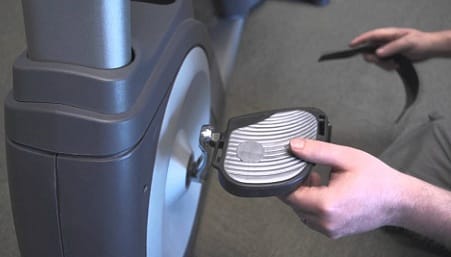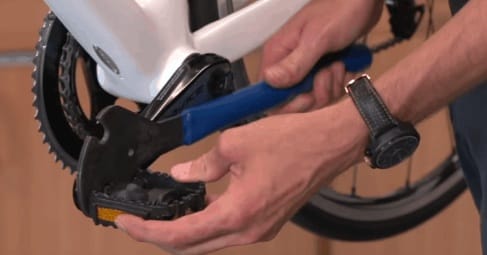As an Amazon Associate, I earn from qualifying purchases.

Exercise bikes are a popular form of cardiovascular exercise that provide a low-impact workout. However, like any piece of equipment, exercise bikes are prone to wear and tear over time. One common issue with exercise bikes is a loose or malfunctioning pedal. In this article, we will discuss how to fix exercise bike pedals, step-by-step.
Tools You Will Need
Before you begin fixing your exercise bike pedal, you will need to gather the necessary tools. The tools required may vary depending on the make and model of your bike, but some common tools include:
- Wrench
- Allen key
- Pedal wrench
- Grease
- Lubricant spray
- Replacement pedals (if needed)
Contents
How To Fix Exercise Bike Pedal?
Diagnosing The Problem

The first step in fixing a loose or broken exercise bike pedal is to diagnose the problem. Some common causes of pedal issues include:
- Loose pedals: If your pedal feels wobbly or loose, it may simply need to be tightened.
- Stripped threads: Over time, the threads that connect the pedal to the crank arm can become stripped, making it difficult to tighten the pedal properly.
- Broken pedals: If the pedal itself is broken, it will need to be replaced.
- Worn bearings: The bearings in the pedal can wear out over time, causing the pedal to feel loose or wobbly.
Tightening Loose Pedals
If your pedal is loose but not broken, it may simply need to be tightened. To do this, follow these steps:
- Turn the bike upside down and secure it in place.
- Locate the pedal that needs to be tightened.
- Use a pedal wrench or Allen key to remove the pedal from the crank arm.
- Apply a small amount of grease to the threads on the pedal.
- Reattach the pedal to the crank arm and tighten it with the pedal wrench or Allen key.
Replacing Broken Pedals

If your pedal is broken, it will need to be replaced. To do this, follow these steps:
- Purchase a replacement pedal that is compatible with your bike’s make and model.
- Turn the bike upside down and secure it in place.
- Use a pedal wrench or Allen key to remove the broken pedal from the crank arm.
- Apply a small amount of grease to the threads on the new pedal.
- Reattach the new pedal to the crank arm and tighten it with the pedal wrench or Allen key.
Lubricating Pedals And Crank Arm
Proper lubrication can help prevent pedal issues from occurring in the future. To lubricate your pedals and crank arm, follow these steps:
- Turn the bike upside down and secure it in place.
- Apply lubricant spray to the pedals and crank arm.
- Use a clean rag to wipe away any excess lubricant.
Preventative Maintenance
To prevent future issues with your exercise bike pedals, it’s important to perform regular preventative maintenance. Some tips for keeping your pedals in good condition include:
- Checking the pedals for tightness before each use.
- Applying lubricant to the pedals and crank arm every few months.
- Inspecting the pedals for wear or damage and replacing them as needed.
- Avoiding excessive force or pressure on the pedals while riding.
FAQs
Can I fix a stripped pedal thread?
Yes, you can use a thread repair kit to fix a stripped pedal thread.
How often should I lubricate my exercise bike pedals?
It’s a good idea to lubricate your pedals and crank arm every few months or as needed.
Why are my exercise bike pedals creaking?
Creaking pedals can be caused by loose or worn bearings. Try tightening the pedals or inspecting the bearings for wear.
Can I use any type of replacement pedal on my exercise bike?
No, it’s important to use a replacement pedal that is compatible with your bike’s make and model.
How can I prevent future issues with my exercise bike pedals?
Regular preventative maintenance, such as checking the pedals for tightness and lubricating them every few months, can help prevent future issues with your exercise bike pedals.
Conclusion
A loose or broken exercise bike pedal can be frustrating, but with the right tools and knowledge, it can be easily fixed. By following the steps outlined in this guide, you can quickly diagnose and repair a loose or malfunctioning pedal, and take steps to prevent future issues from occurring.





